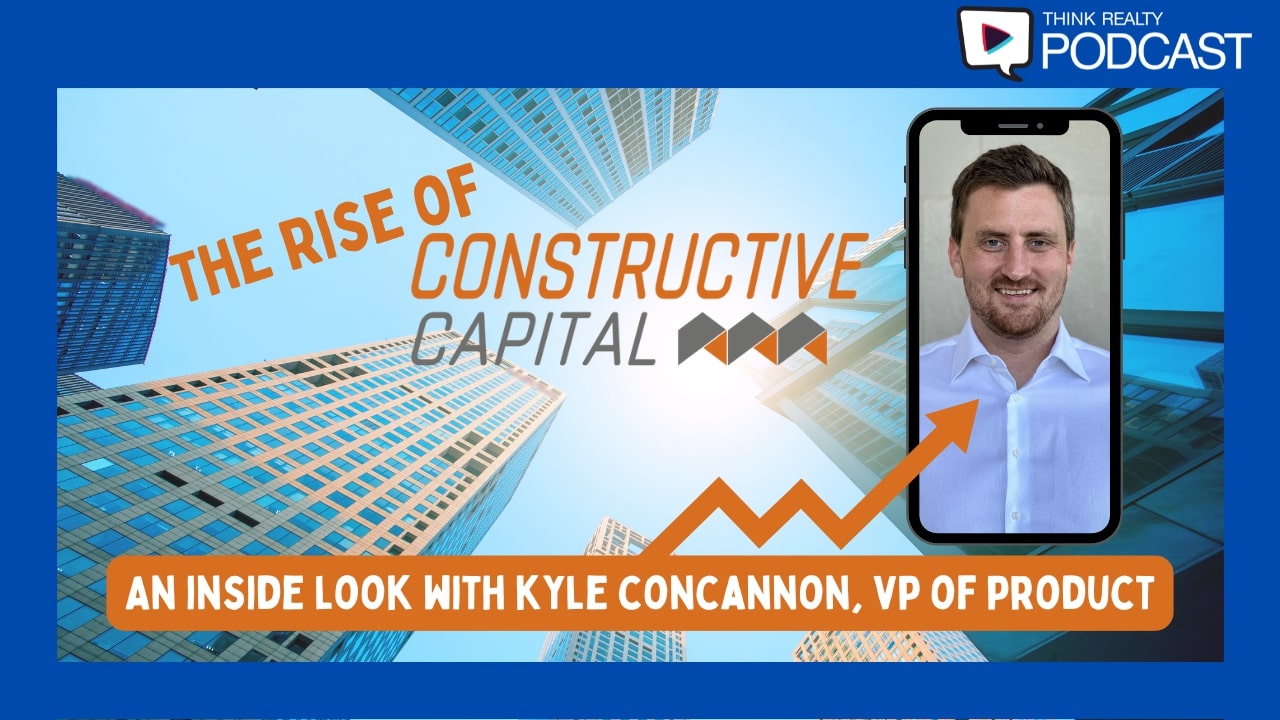A few years back, a friend asked me to join him in a meeting with a group that was raising money for a crowdfunding platform that allowed sports teams to raise money for travel and equipment. I’ll never forget it because the principal asked, “Have you heard of the funding vehicle kind of new to America called crowdfunding?” Because of what it’s become, I laugh at the fact that the concept was just that only a few years ago.
Like many of you, my first exposure to crowdfunding in the US was through sites like Kickstarter and GoFundMe. After my family went to bed, it became a hobby to scroll through board games and widgets that interested me. I’d throw a few bucks at products I believed in or wanted to see come to light. I knew that although I got a free t-shirt out of it from time to time, the products I funded as part of a crowd may never make it. In fact, now we have good data that suggests approximately 90% of fully-crowdfunded projects don’t end up being commercially produced. NINETY PERCENT! This illustrates that a product (or even business) getting funded does not necessarily a guarantee success.
A few months after getting acquainted with crowdfunding for widgets, I started seeing more traction in peer-to-peer lending. As a real estate lender and with FundingDatabase being a pre-marketplace marketplace of sorts, I was interested to see what regulatory precedence would be set for real estate crowdfunding. Even after Prosper got sued in 2008, the details of the class action weren’t public without digging until years later. The lawsuit was settled in 2013 for $10 million. But by that time the JOBS Act had passed and enabled marketplaces and other alternative lenders to utilize new ways of raising money and offering securities.
If anyone climbed in at the right time and did it right, it was Ron Suber. As my enchantment with peer lending trends grew, I crossed paths with him at a couple conferences and can testify that his leadership is deliberate and unimpaired. I heard his acknowledgments of many of the variables in peer-to-peer lending. There was a balance between innovation, acceleration, and caution. But behind the news of Lending Club’s flubs, Prosper is also reportedly selling off or seeking assignees for all its real estate holdings– including the much anticipated Utah office I commute past everyday. Even the “canary in the coal mine” is struggling. And for some reason, I’m not surprised. When the market securitizes loans in an effort to liquify companies like Prosper, the market begins to dictate the future.
Unfortunately, so many were enabled during the confluence into crowdfunding to structure secured-lending platforms like a crowd-sourced venue like Kickstarter. But when investors are expecting a return instead of a free t-shirt, the rules are different.
As real estate crowdfunding platforms began to burgeon, we watched with more intent. Because we had massive amounts of private loan deal flow and a huge database of private lenders and investors, all we were missing was the interface. Although we knew you can’t (or shouldn’t) remove a human entirely from the underwriting process, there was a demand for automation. In the case of FundingDatabase, we built an offline marketplace that used algorithms and data to match borrowers and lenders (some of which we funded in-house). We never made the deals available to a crowd for solicited funding. The best real estate crowdfunding platforms are still in their relative infancy. With short terms (12-60 months on average), we are anxious to see how platforms interface with investors. We know what it’s like to have a few hundred investors with questions as a portfolios matures. If that is compounded by thousands who invested by way of their own click-through on-boarding process, it seems the burden would increase. In private lending for commercial projects especially, there is a higher default and workout rate than with SFR or conforming loans.
This year, FundingDatabase is creating a single sign-on marketplace where platforms (P2P, RE Crowdfunders, and other Marketplaces) can cross-post opportunities and investors can access their entire crowd portfolio in one place. Think Mint and Trivago meets crowdfunding. This allows us to continue to send deals to platforms that they underwrite and merely put deals in front of investors that they solicit and qualify. We will also provide a deal-side marketplace for the various platforms to subscribe to and place “dibs” on deals originated through FundingDatabase—essentially pulling the loan into their own underwriting process. But I digress.
What happened to Lending Club yesterday should be another, louder warning shot to all of us in Fintech or Crowdfunding. A review of the books concluded that $22M worth of loans had non-credit and non-pricing related irregularities, and one member of the Lending Club team had interest in the portfolio. (UPDATE: It appears Jefferies had tried pushing Lending Club to fix disclosures to prepare $150M-package for bond securitization.) From my view, the issues causing CEO Renaud Laplanche to resign are more indicative of the potential pitfalls of real estate crowdfunding than P2P consumer or business lending. And as a public company now, Lending Club has a different set of rules and capital feedstock than privately-funded platforms. If you’re a Lending Club investor (in fact, I just bought shares in LC at the LOD), I wouldn’t be too worried at the new basis. Of course, things were out of whack and needed a refresh. Lending Club appears to have solid fundamentals that will survive Laplanche’s departure. As an industry leader and under great scrutiny, they have to disclose much more than mere yield performance metrics. And isn’t if funny how an unexpected departure of a CEO can cause such a market reaction? It seems like that dynamic was more impactful than the findings of the review at the core of the controversy.
But what can we learn? What sounds from the Lending Club trump should perk the ears of real estate crowdfunding platforms? My take:
- Your underwriters own your business. Think about it… You’re marketing for deal flow. You’re showing off your automated technologies. You’re promising borrowers the best pricing and the fastest funding. You’re modeling yield projections to win investors. Those initiatives aren’t contrary to solid underwriting, but dependent upon it. Crowdfunding for an ROI only works if the deals (and structure) are of a high quality. If you remove human eyes from the underwriting process entirely, your science can be manipulated. If a deal fails (which some inevitably will), your investors will compare the promises made when they subscribed to the outcome.
- Even Watson is a computer. Robo-advisors, data analytics and and decision-making engines are super cool. Automation improves efficiency for companies like FundingDatabase because burdensome clerical functions can be performed scientifically and in real time. If a crowdfunding platform moves too slowly, the technology is in vain because it’s really the only thing that separates fintech from a brick and mortar bank. Create checks and workflows that ensure human interaction for the most important fiduciary decisions. Our software, idealSUITE, was built to make that possible. Many peer-to-peer real estate platforms show investors how credit decisions are automated and how different risk boxes determine pricing. That isn’t always enough—because a great borrower according to an algorithm may easily navigate around the red tape by hiding data that could completely torpedo the loan.
- Portfolios mature. For those of us who have managed lending products, portfolio maturity comes with its challenges. Newbies and platforms posing as servicers may believe that private loans funded through the crowd will perform at the same default rates as a conforming mortgage pool. These are different galaxies! We’re only a few years into the real estate crowdfunding establishment. Many of these platforms extended loans on 24-36 month terms. What if, say, 5 to 10% of loans don’t payoff on time or have the ability to extend. Not only is the burden to rescue those deals often incredible, but the legal expenses (especially given the syndication of Notes) associated with gaining possession of the asset is expensive and time consuming. If, no… WHEN, a chunk of assets become “non-performers” or owned, and the platform can’t dispose of it in its current position, how will the thousands of investors that can’t speak with one another react? How will that event drag on the yield?
- Real estate is full of variables. Although underwriting and data may be higher quality and more available than ever before, there are many more variables in real estate lending than other types. The loans, and thus the stakes, are often higher when challenges arise. Market changes, sponsor risk, weather, unemployment—the list of impacts is lengthy. Assuming all real estate projects will perform like an initial, successful one is a major mistake.
- Allocation can be the difference. A crowdfunding platform typically makes opportunities available to investors on a per deal basis. The investor is left to choose which assets are the best fit for an individual allocation. Something consumer and business platforms do, mostly because the loan amounts are so much smaller, is a broader allocation of a smaller amount of cash. For example, an investor may pledge $25,000 to one real estate loan alongside other investors. That same $25,000 in a peer-to-peer platform is likely to be spread between thousands of loans that are wholly much smaller than a real estate loan. So not only is the position smaller, the risk commensurate to the portfolio is much smaller too.
- Compensation and Incentive. If a platform makes a loan on real estate collateral, it typically charges an origination and/or servicing fee. Whether the platform holds the loan for its entire term or sells the Note, the incentive to continue working a loan if it defaults all but disappears.
Although unsecured lending has its reliable metrics to observe, one thing real estate investors have as a value-add to justify larger positions that take up a major part of the total loan amount is the security backing a real estate transaction. But senior security is only a boon if the underwriting was done well.
I’m hugely concerned with some of the marketing material real estate crowdfunding platforms send out. Promises of high returns, back-tested or relative to infant portfolio performance, is extremely cavalier. When high-yielding, consistent p2p resources have issues on vanilla deals, imagine the type of trouble that could arise on a complicated real estate transaction. This could affect the way securities can be offered, private loans can be made, and profitability of all industry players. New regulation is imminent, but with so many categories of new innovation, it takes good actors self-regulating the bad actors away.
Investors need to ask more second questions before delving into digital transactions, especially when new concepts and companies can legally generally solicit attractive yields that are often unfounded. Especially if today’s investors enjoy the low barrier of entry to qualified investments, it’s imperative to look beyond the glossy material.
Platforms must find a way to maintain secret sauce while disclosing important underwriting policies to investors. Plan for the future. Budget to service loans beyond maturity and work out disposition options. Have a legal reserve to pull from in the event of default. Otherwise, when low-quality, poorly-underwritten loans mature, there may be several Lending Club-type moments closer to home.
Kellen Jones is co-founder and CEO of FundingDatabase, a deal flow and lending SaaS company and COO at Cache Private Capital, a private mortgage REIT, based in Salt Lake City, UT. Visit www.fundingdatabase.com. This post originally appeared on LinkedIn,










Leave A Comment